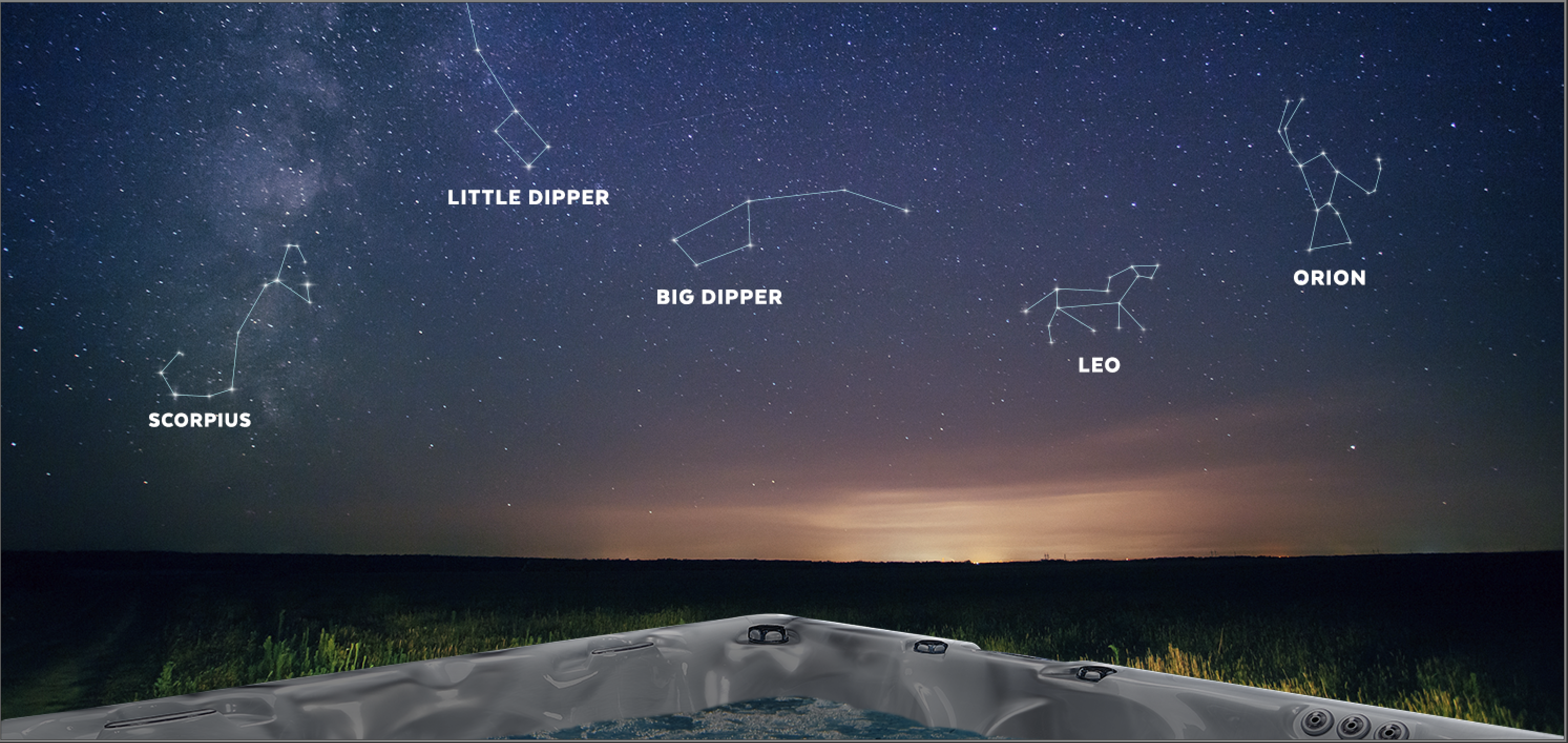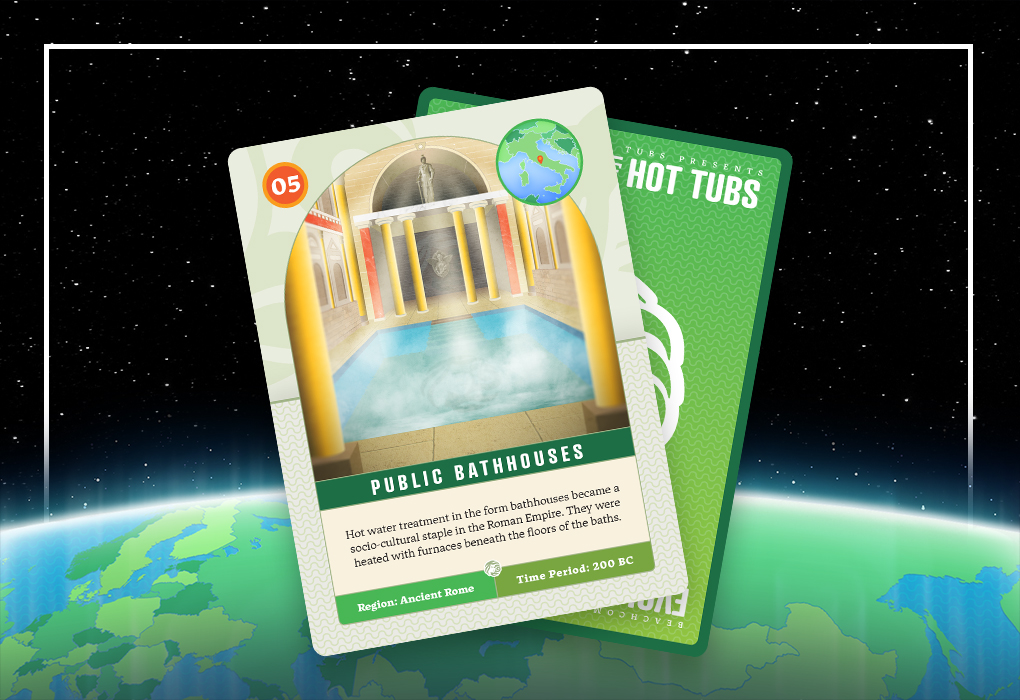BACKYARD STARGAZING GUIDE
Relaxing in your Beachcomber under a clear night sky is a phenomenal way to relieve stress and decompress. While soaking, it can be rewarding to look up and contemplate the constellations that make up our galaxy, testament to the power of the human imagination. Below are a few descriptions of some of the most popular constellations.
Big Dipper
(aka. Big Bear, The Plough, Wain, Great Wagon, The Carriage, The Ladle)
Part of the constellation Ursa Major, the “Big Dipper” is an asterism composed of seven stars (Dubhe, Merak, Phecda, Megrez, Alioth, Mizar, Alkaid) and it has played an important role in celestial navigation, with two of its stars (Merak and Dubhe) pointing the way to the current pole star, Polaris.
Little Dipper
(aka. Little Bear, Dog’s Tail, Phoenician Bear, Fire Trail)
The Little Dipper is famous for containing Polaris, the North, or Pole, Star. This constellation is very similar to the Big Dipper, as they both have the same general look to them. Although this formation is best viewed in June, in the Northern Hemisphere it can be seen for a large majority of the year. The Little Dipper is also home to the hottest white dwarf star yet discovered, Calvera, with a surface temperature of 200,000 kelvin (Our sun has a surface temperature of approximately 5,800 K).
Orion
(aka. The Hunter, The Heavenly Shepherd, Sah, Hayk, al-jabbar, Mriga, Nataraja, Nimrod)
Orion is one of the largest and most recognizable constellations, viewable from just about anywhere on Earth. Interpreted as many things, from a hunter to a dancer, to a child playing with string, its most recognizable feature is the collection of three stars (Alnitak, Alnilam, Mintaka) at its center, forming the asterism known as Orion’s Belt. It is home to two of the most famous stars in the night sky: Rigel, and Betelgeuse.
Leo
(aka. Ser, Artan, Aryo, Arye, Simha, Bacchi Sidus)
There is a somewhat unique (as constellations go) consensus the world over about Leo: it looks like a lion! Easily identifiable in the night sky, Leo is one of the 12 Zodiac constellations, and was included by the 2nd Century astronomer Ptolemy as one of the 48 constellations in his treatise on astronomy, the Almagest. An asterism known as “The Sickle”, resembling a backwards question mark, makes up Leo’s head and mane.
Scorpius
(aka. Mulgirtab, Ka Makau Nu o Maui, Banyakangrem)
Scorpius is one of the oldest identified constellations and is included in the Zodiac. Best viewed from the southern hemisphere, its shape has been interpreted by many cultures to represent many different things, from a divinely wrathful scorpion to a divinely powerful fishhook and a leaning coconut tree.











